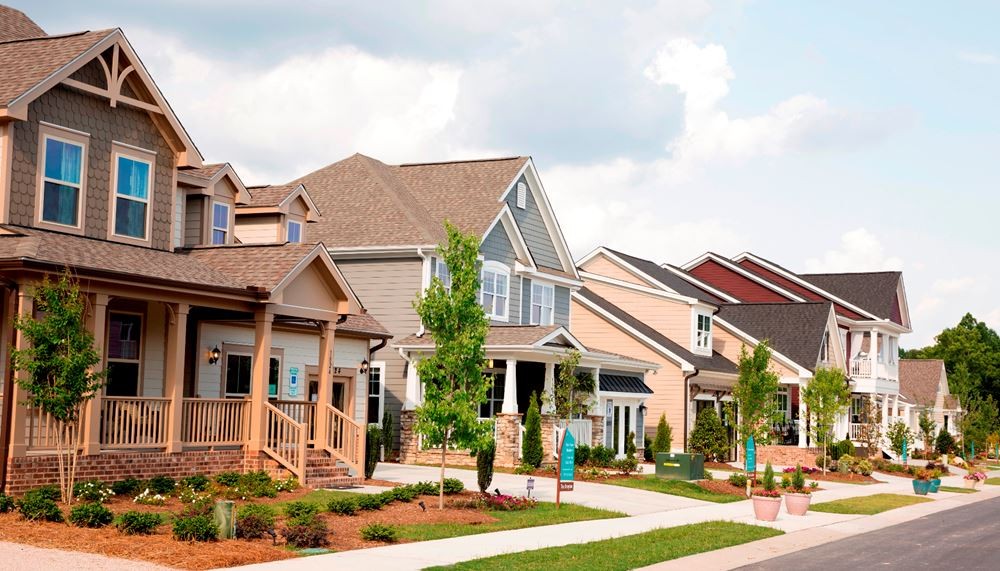
What to Know About Planned Communities
There are planned communities in many places around America. Many of them are considered high-end places to live. For example, in Loudon County, people often want to buy houses in places like River Creek. Loudon County is the wealthiest in the country, and River Creek is a planned community located on the Potomac, with homes that have a median list price of $960,000.
River Creek was the D.C. area’s first gated, private country club community, and it’s remained popular since its inception.
This is just one of so many of these communities around the nation, so what do people like about them, and what should you know if it’s something you’re considering?
An Overview of Planned Communities
A planned community is a sprawling suburban development, often located right outside or near a major city. The average size of a planned community is more than 2,500 acres. There are planned communities throughout the country, but they’re especially popular in southern and coastal states. California also tends to have its fair share of planned communities.
In a traditional neighborhood, builders will construct houses on the available land. Eventually, businesses will also come into the area, and they’ll build around the neighborhood. In doing so, the businesses and developers aren’t necessarily thinking about the residents of the neighborhood or getting their input.
The difference in a planned community is that every house, parcel of land, and amenity is very carefully mapped out ahead of time. The goal is to make life convenient, comfortable, and enjoyable for residents.

A lot of communities also own land that surrounds their plot, so they’re able to stay in control of development occurring nearby.
Frequently, a master-planned community will center around a country club, or golf course, or at least that was true in the past.
Now, however, the interests of buyers have shifted quite a bit, so amenities like gyms, outdoor recreation, and shopping centers may be included.
The pandemic has led a lot of families to move from more expensive places and big cities to these communities, and since they are coming from urban areas, they want amenities like they’re used to.
It’s common for larger communities to be sub-divided. These sub-divided communities might be grouped together based on things like housing price and size or amenities.
The History
Riverside is a Chicago suburb to the west of the city, and it was the first planned community in the country.
Architects Frederick Law Olmsted and Calvert Vaux designed the community in 1869. They were known for working together on New York City’s Central Park Design.
The architects spent years creating their layouts. The objective was a suburban neighborhood with an emphasis on convenience, greenery, and space for recreation. In the plan, houses were pushed back from major streets, and the roads were curved, winding through trees.
The Riverside community was designated in 1991 as a National Planning Landmark. It’s still a popular suburb, and it’s considered luxurious and stylish. The homes range from cottages to Victorian mansions.
At the start of the 19th and 20th centuries, a growing number of architects start to seek inspiration from the design of Riverside.
The Benefits of Planned Communities
The benefits can depend a lot on the community itself, but generally, some things you might expect as advantages include the following:
- Road planning tends to be strategic, and there’s often less traffic. It’s common for planned communities to have a gated entrance. This reduces traffic and may limit it only to residents and guests. There’s a lot of attention in planning these communities that go toward the road system and traffic flow, with the objective of reducing backups.
- There’s often a design that emphasizes walkability. Convenience is a big part of the infrastructure of a planned community. There may be residential areas that are walkable to shops, stores, and other amenities in the communities.
- Planned communities may take location into consideration, in that it’s good to be close to public transportation, if relevant, and city amenities.
- Ample green space creates recreational opportunities, is aesthetically pleasing in planned communities, and it makes these neighborhoods feel tranquil. There are often wooded areas nearby with trails, bike paths, parks, and more.
- When you live in a planned community, there may be a strong sense of community because of the opportunities to interact and share amenities. These communities also often have scheduled events for residents to enjoy.
- There may be several builders who create homes in these communities, so there tends to be a variety of styles in the homes. The homes may be available at vastly different price points.
- We tend to see planned communities as being very safe and secure, and if you have young children, this might be your top priority when you’re buying a home. Along with gated entries, planned communities often have local neighborhood watch groups, and some hire around-the-clock security patrols.
The Downsides of Planned Communities
The upsides for a lot of residents of planned communities tend to far outweigh the downsides, but still, there are some to consider:
- There’s less privacy when you’re a resident of one of these communities. Houses are closer together, the population may be dense, and since there is a communal feeling that’s inherent in the design, you’re probably going to interact with your neighbors quite a bit.
- Within the community, there may be a Community Development District. This is a governing body, and there’s also probably a Homeowners Association. While HOAs can make sure communities stay cohesive and well-maintained, they can also be incredibly restrictive, plus the dues can be hundreds to thousands of dollars a year.
- Along with HOA fees, there may be other fees assessed. For example, a lot of planned communities will have an initiation fee and also a capital reserve fee.
Planned communities offer a lot of benefits and some drawbacks. They aren’t for everyone, but for someone who wants a suburban lifestyle paired with a sense of security and amenities, they can be a perfect choice.




